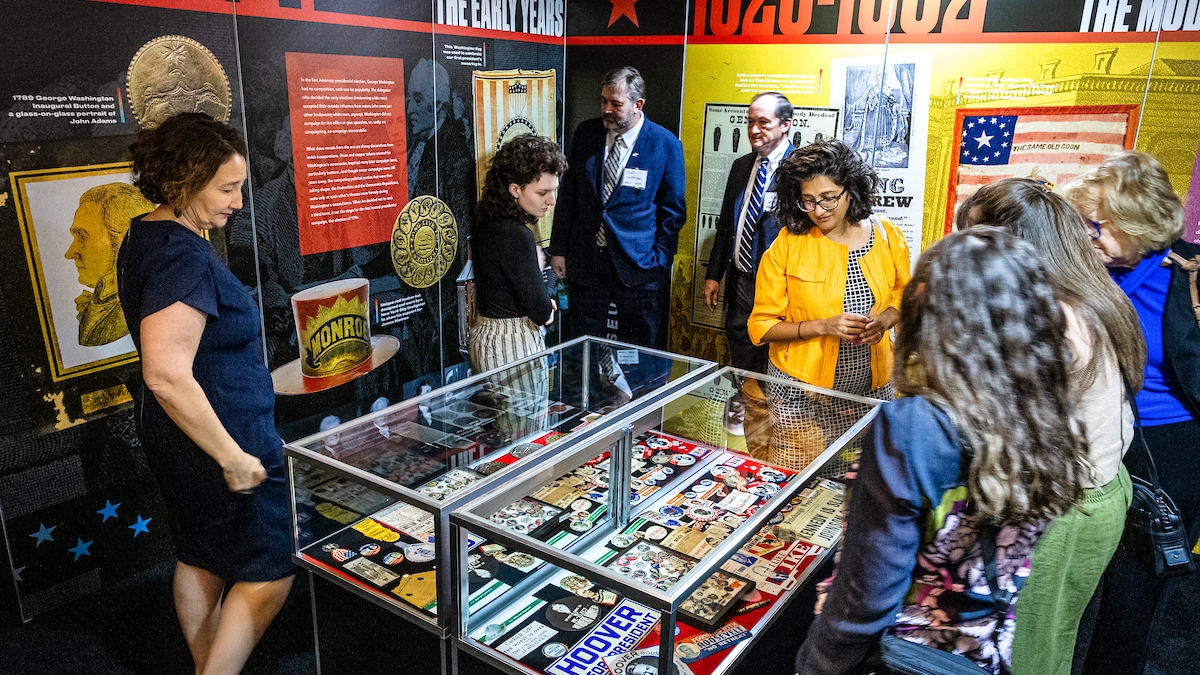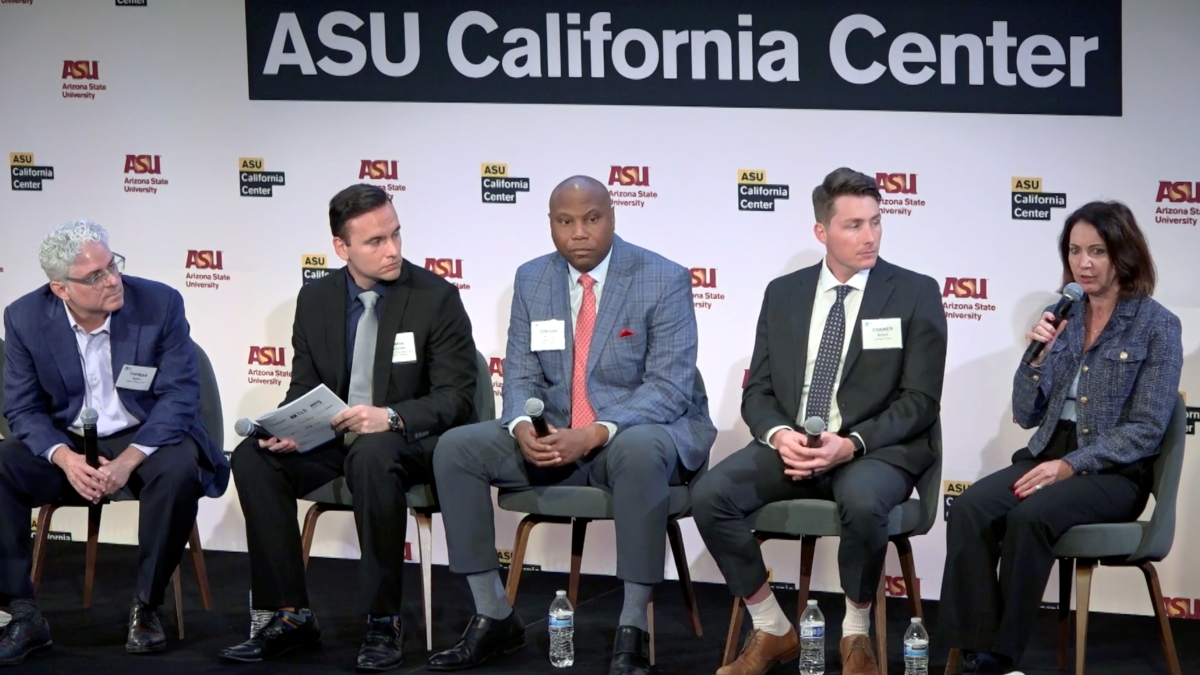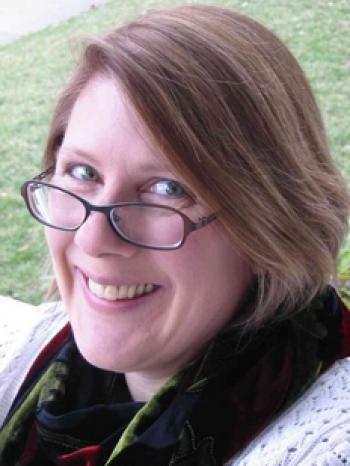Editor's note: This is part of a series investigating gun violence from many angles.
Any news organization could tell you that guns are almost always a timely topic. Hardly a year has gone by over the past decade when there wasn’t a mass shooting, and in 2018 alone, there have already been several major incidents.
Sherry Towers, a statistician, modeler and research professor at Arizona State University, began her academic career studying the spread of disease in populations. As mass shootings began to occur more frequently in the U.S., she wondered if contagion might have something to do with it. So she shifted her focus to discovering more about the factors that cause such events in the hopes of finding ways to prevent them.
Without government funding to support that research, it hasn’t been easy.
“After every one of these high-profile shootings, particularly ones that involve kids, people want something done, but whatever gets done should be evidence-based,” Towers said. “The way you get evidence-based solutions is you fund the science that develops those solutions.”
Despite the lack of resources, Towers and her colleagues have spent much of their spare time researching the topic. Recently, she shared with ASU Now some of what she has learned along the way.
Sherry Towers
Question: Your background is in the spread of disease in populations. How did that lead to you study mass shootings?
Answer: I was collaborating with people at Purdue University and went there to meet with them in January of 2014. There was a school shooting at the university that day, so the meeting was canceled. One student killed another student. We never did find out why he did it, and he committed suicide in jail. It occurred to me that day there had been about three school shootings in a 10-day period. Even for the U.S., that was a lot. So I started to wonder if contagion was playing a role. I talked to my colleagues about looking at school shootings from a contagion perspective, applying modeling methods of looking at disease to looking at this topic. The way it manifests is in an unusual bunching in time around the higher-profile events, the ones that get the most media coverage.
Q: Many point to Columbine as the beginning of the mass shooting phenomena in America. Would you say that’s accurate?
A: I think what was different about Columbine is that it was happening in a high school and had a high casualty count. Columbine was certainly not the beginning (of the phenomenon); there were mass shootings before. But because it was kids that got killed — and you see that with Newtown, for instance — it was very impactful on the American consciousness, and it inspired debate on gun control. Whenever there are kids involved it tends to be a particularly impactful event.
Q: Have instances of mass shootings increased exponentially since then?
A: No, they haven’t increased exponentially. What’s interesting is that in regard to mass shootings — not just in schools, but mass shootings where at least four people were killed — there were a total of six over the past 10 years: The one at Northern Illinois University in 2008; Oakland (Oikos University) and Newtown in 2012; the Elliot Rodger incident in 2014; another incident in Maryville, Washington that year; then the Roseburg, Oregon shooting (Umpqua Community College). That’s only up to the end of 2017, not including 2018. Out of those six, two were at K-12 schools: Newtown and the one in Maryville, Washington. So what’s interesting about this current year — and as a statistician, it’s dangerous to make an inference about only two events — but what’s interesting is that over the past 10 years, we had only six mass shootings, and in the first five months of 2018, we’ve had two.
Q: Do you have any idea why this might be happening?
A: It might be partially contagion playing a role. And even though analysis shows there was this approximately two-week contagion period (within which a shooting happens and someone else is inspired to copy it), some events inspire similar ones long past the dates at which they occurred. There was evidence this latest shooter (at Santa Fe High School in Santa Fe, Texas) dressed like the Columbine shooter (he wore a black trench coat).
So he clearly had some inspiration from the Columbine event, even though it was long past. So then the question isn’t what event inspired them, but what was the straw that broke the camel’s back? What led them to perpetrate on the day that they did? It could be the media effect, that they were exposed to media stories about an event that happened in the relatively recent past that perhaps consciously or subconsciously influenced them to ideate this thing. We don’t know what inspired the Parkland shooter to suddenly snap on the day he did. But contagion may be playing a role. And there is an increasing access to weaponry. In the case of this latest shooting in Santa Fe, it involved a shotgun and a revolver; it certainly wasn’t an automatic weapon. But in the case of Parkland, a young teenager was able to get a hold of very high-powered weaponry, very easily. If you go back 10–15 years, that kind of weaponry was not as easily available.
Q: Are there similarities in mass shootings in terms of the type of people who perpetrate them and how they are perpetrated? Or is that a misconception?
A: One thing we do know is that there is this misconception that most mass shooters are white. They’re certainly male; the overwhelming majority are male. But there is a misconception that they are overwhelmingly white. That is not true. Their ethnic and racial mix is approximately what you find in the general public.
As far as how they’re perpetrated, there are very few people in the U.S. looking at these issues, and the reason for that is there is a real lack of federal funding for it. Since the 1990s there has been a congressional moratorium preventing federal funding from going to the CDC for any kind of study that might by default promote gun control. If you are a researcher looking at the cause and effects of these events, one of the things you’re going to look at is not just demographics but availability of types of firearms that were used. And that’s what Congress is saying researchers cannot look at. That has had a huge suppressive effect on this research. When you have this dearth of funding, there’s a whole bunch of things that need to be looked at that can't. The other problem is a lack of data on anything to do with firearms. For years there’s been pressure from gun lobbyists to suppress any data that might be able to inform what kinds of guns are out there and how they’re being used.
More Law, journalism and politics

Exhibit uses rare memorabilia to illustrate evolution of US presidential campaigns
After one of the most contentious elections in history, a new museum exhibit offers a historical perspective on the centuries-old American process.“We The People! Electing the American President” had…

TechTainment conference explores the crossroads of law, technology, entertainment
What protections do writers, actors, producers and others have from AI? Will changing laws around name, image and likeness (NIL) eliminate less lucrative college sports programs?And what does…

How to watch an election
Every election night, adrenaline pumps through newsrooms across the country as journalists take the pulse of democracy. We gathered three veteran reporters — each of them faculty at the Walter…

